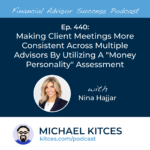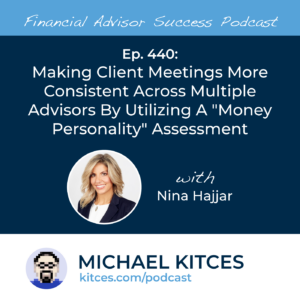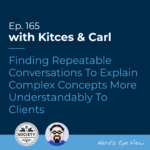When a financial advisor transitions from one firm to another, they're often offered incentives by the new firm based on how much client revenue they bring with them. The challenge, however, is that advisors generally don't have the legal authority to simply transfer clients to a new firm. Because client relationships are technically "owned" by the firm – not the individual advisor – any transition requires clients to take action to shift from one firm to the other. This creates a host of challenges tied to client privacy laws and the advisor's contractual obligations to their former firms.
In this guest post, Isaac Mamaysky, Partner of Potomac Law Group and Cofounder of QuantStreet Capital, discusses the legal and compliance issues that arise when an advisor tries to bring clients with them to a new firm and the key considerations – including data privacy restrictions under SEC Regulation S-P and non-solicit clauses in employment agreements – that create complex dynamics and potentially conflicting obligations advisors must navigate to avoid violating privacy laws or breaching contractual obligations.
From a privacy standpoint, client data held by an RIA or broker-dealer is considered Nonpublic Personal Information (NPI) under Regulation S-P and generally cannot be shared with an unaffiliated third party without the client's consent – unless the firm's privacy policy explicitly allows it and the client has not opted out. Which means that if an advisor leaves a firm whose privacy policies don't permit such sharing, they can't take any client data with them, including names, contact details, or even knowledge that an individual was a client of the old firm. Furthermore, in states with stricter rules, such as California's "opt-in" privacy requirements, clients must affirmatively authorize information sharing at all times, adding another layer of complexity.
Although the Broker Protocol allows for the sharing of limited client contact information between firms, advisors and their firms are still required to comply with Regulation S-P. Advisors may only take information if their firm's privacy policies allow it and clients haven't opted out. In other words, participation in the Broker Protocol doesn't override privacy laws.
Further complicating matters, advisors may be bound by contractual non-compete or non-solicit clauses in their employment contracts with their old firm. These clauses typically prohibit advisors from encouraging clients to move with them to a new firm. So if an advisor is required to obtain client consent before transferring information to their new firm, they may be contractually prohibited from even asking for that consent. In other words, when privacy laws prohibit sharing information without consent, and contractual obligations prohibit asking for that consent, advisors risk violating either privacy law or their agreement with their previous employer!
Ultimately, the key point is that moving clients from one firm to another requires careful coordination across three fronts: Federal and state privacy laws, firm privacy policies, and employment agreements. While obtaining client consent is generally the safest approach, advisors must understand whether asking for that consent could violate their employment contract. While the rules can be complex, a thoughtful evaluation of the advisor's legal and contractual obligations, along with careful planning, can help manage their risk and increase the likelihood of a successful transition!









